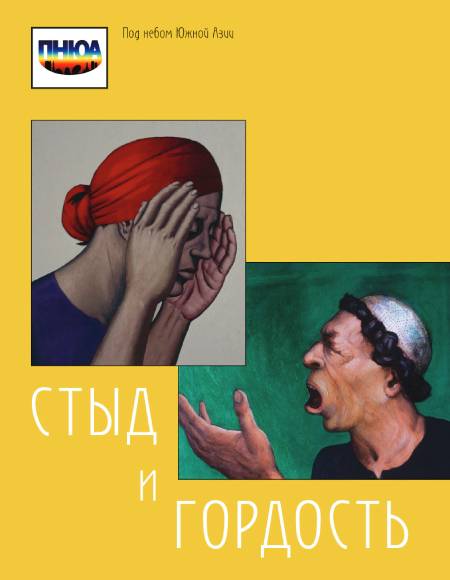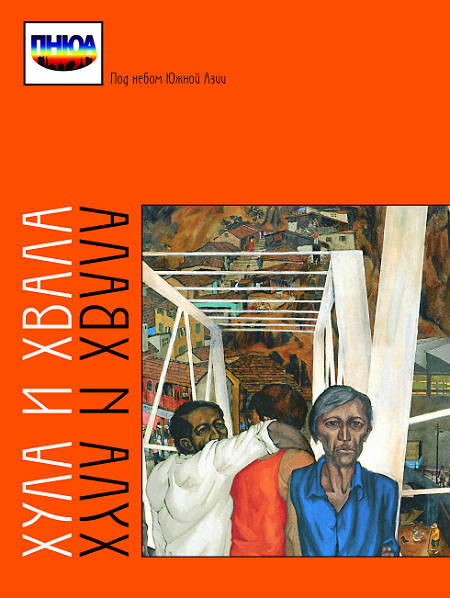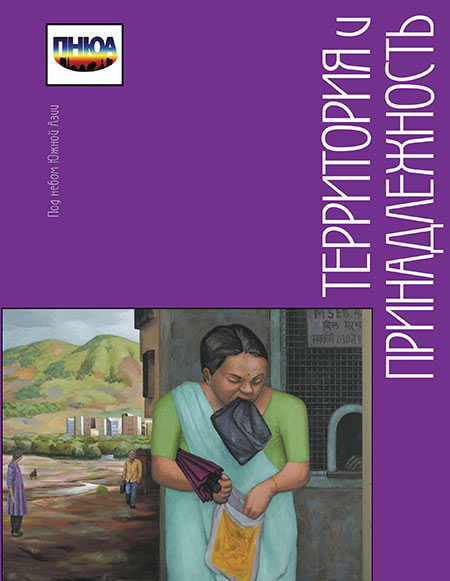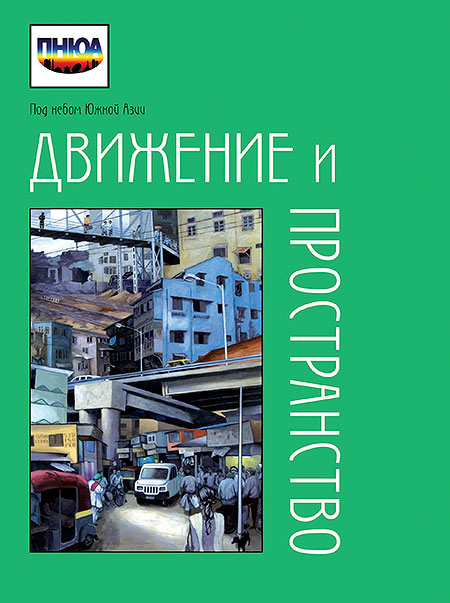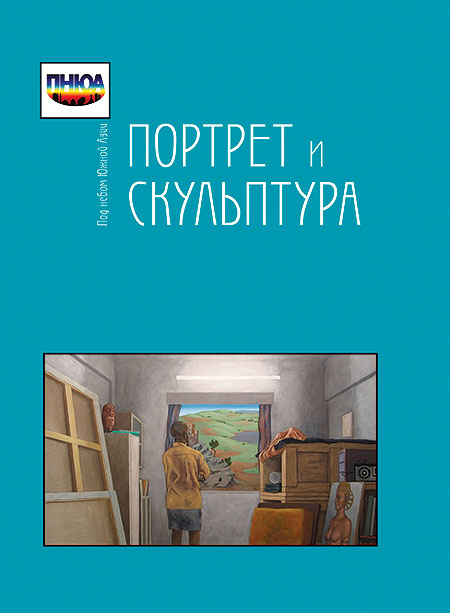 Dr Irina Glushkova, Ph.D., D.Litt.,
Dr Irina Glushkova, Ph.D., D.Litt.,
Head of the Under the Skies of South Asia project
pnua@yandex.ru
Dr Svetlana Sidorova, Ph.D,
Deputy Head of the Under the Skies of South Asia project
pnua@yandex.ru
PRELIMINARY REMARKS
The grand research project, Under the Skies of South Asia (USSA), was initiated in 2011 by Dr. Irina Glushkova. As the concept of the project had been still taking shape, we published a pilot volume ‘Death in Maharashtra. Imagination, Perception and Expression’ (ed. Irina Glushkova, Moscow: Natalis, 2012). The success of the volume was inspirational for our moving further.
The specific feature of the Under the Skies of South Asia project is its focused character. Each volume is based on a multidisciplinary and multimedia study of a strictly defined theme – such as ‘portrait and sculpture’, ‘movement and space’, ‘territory and belonging’, ‘censure and praise’, ‘shame and pride’, ‘servant and master’, ‘object and usage’. The guiding principle of the project is Not in general, but in particular, which had been observed strictly since the pilot volume. It presupposes a reversal of the outdated Orientalistic principle of theorizing on an abstract, uniformed ‘India’ or the imaginary ‘East’ and neglecting the specificities of spatial, social, economic, ethno-cultural and other entities. Each theme of the project is examined in a flesh-and-blood reality of a place, social or cultural group, polity, etc., i.e. it deals with a spatially, culturally and temporarily defined entity, researchable by field studies, or, in the case of the bygone epochs, by analyzing original texts, anthropological and archeological data. To add verifiable ‘particularity’ to the research articles, each volume includes translations from original literary texts and is richly illustrated.
The project has been an attempt to employ new methods of research (‘turns’) for studying the multi-faceted realities of South Asia (India, Pakistan, Bangladesh, Nepal, Sri Lanka, Bhutan and the Maldives). The very concept of ‘South Asia’ had to be revisited as something more complex than ‘India and adjoining countries’, as an intricate web of interrelations, commonalities and dissimilarities. To have a clearer perception of the specificities of the macro-region and its parts (the latter implies not only the constituent countries, but spatial, social, cultural and political entities within each of them), we benefit from multi-disciplinary approaches in the humanities, like ‘visual’, ‘mobility’, ‘spatial’, ‘communicational’, ‘emotional’ and ‘material’ turns, as well as the problematics of domestic service, hitherto neglected, but actively discussed at present. Each of the ‘turns’ was, significantly, initiated by specialists working on various societies, epochs and cultures. They suggested a methodology, while their colleagues analyzed, accepted or rejected, criticized, or developed, in any case correlating it with their own field of study. We view the above-mentioned ‘turns’ not as an academic ‘fashion’, but as opportunities to open new vistas in understanding South Asian societies, their past and present, and to situate South Asia in world history and culture.
USSA-1
Under the Skies of South Asia. Portrait and Sculpture: Territories, Ideologies and Ethnicities as Viewed through Material Objects (general ed. Irina Glushkova, ed. Irina Prokofieva, Moscow: Vostochnaya Literatura, 2014, 607 pages).
The volume focuses on portraits and sculptures throughout South Asia’s space. Contrary to the traditional ‘art history’ that studies the ‘pre-life’ of a visual art object (history of its creation, personality and aesthetic principles of the author, form of the object and artistic techniques employed in it), the contributors work within a more recent methodology of visual studies, which looks into the ‘afterlife’ of art objects, their social roles and aspects of public perception. The authors’ task was to analyze how portrait and sculpture placed in public spaces operate as crucial instruments for the establishment and realization of territorial, national, ethno-religious and group identities. The study investigates the functioning of portraits and sculptures as markers of belonging, instruments of domestication and appropriation of space, creators and preservers of historical and cultural memory, sources for and provokers of social and religious conflicts, immediate participants in political confrontations. The authors discuss not only how a visual art object is viewed by audiences, but also how dominant and alternative traditions (in ideologies, religions, cultural values, politics, etc.) inculcate a certain perception of portraits and sculptures into general public’s palette.
The section titled ‘In the Whirlwinds of Politics’, deals with political ‘afterlife’ of visual art objects, their ‘participation’ in political conflicts. The next section, ‘Within the Official Framework’, analyzes the officially established visual representations of national heroes, classical writers and thinkers, usually displayed in public spaces as markers of national identity and dominant ideology. The ‘Under the Alien Skies’ section discusses the portraits and sculptures of Indian celebrities outside India, along with those of foreign celebrities in South Asia. The section ‘In the Labyrinth of Meanings’ highlights social, religious, cultural and historical symbolism of visual art objects. The section titled ‘Under the Banner of Shivaji’ deals with the controversial representations of the Maratha hero, Chhatrapati Shivaji, and historical characters in his proximity who, due to the changes of political and social priorities, become ‘incompatible’ with the ideology of the forces dominating the regional scene. The ‘In the Masters’ Creations’ section discusses the canonized images of gods, heroes and saints as worked out by Indian artists, sometimes establishing the canons and sometimes violating them.
The readers are introduced to an intricate web of fascinating stories of portraits of medieval saints and heroes who had never been portrayed during their lifetime, of visual images becoming canonical even in the countries where a dominant religion prohibits portraiture, of statues ‘cleansed’ by one political force after having been used by the other, of sculptures transformed into ‘members of parliament’, ‘political activists’ and even ‘diplomats’ facilitating bilateral relations.
USSA-2
Under the Skies of South Asia. Mobility and Space: In Quest of Meanings Beyond Stasis (general ed. Irina Glushkova, ed. Svetlana Sidorova, Moscow: Vostochnaya literatura, 2015, 911 pages)
The volume focuses on mobility as a clear-cut meaning-generating phenomenon and a basic research category. It concentrates on developments and strategies between the points of departure and arrival, i.e. in transit. Mobility, as a basic element of human existence, dictates and prescribes the modes and speeds of life. It designs the surrounding space by filling it with movable and immovable objects and markers of ceaseless motion (roads, bridges, trains, hotels, petrol stations, airports, parking lots, etc.). It serves as a crucial instrument for the establishment of various types of connections and is of primary importance for territorial appropriation and development, establishment of national borders, acquisition of power, dissemination of ideas and ideologies, circulation and exchange of information and so on.
Research papers in this volume analyze dynamic life and the practices of people, gods and animals, objects, information, ideas, images, capital and capitals, etc. on various levels/scales (mass or individual, throughout the subcontinent or along local routes, short or long-term), of various types (instrumental, physical, expressional) or motivations (conquests, political demonstrations, immigration/emigration, daily routine trips, tourism, cargo transportation, etc.). The volume consists of two logical parts. The first deals with ‘Subjects and Meanings, or Who and Why’. The section titled ‘Pathway to Homeland’ analyzes mobility as an instrument of acquisition of a homeland (migration patterns of proto-Dravidians and Indo-Aryans, penetration of Muslim streams into South Asia). The next one, ‘Refuge to Foreign Land’, deals with the loss of a domicile (the tragedy of the refugees at the time of the 1947 partition). It is followed by the ‘Power on the Move’ section, which highlights the dynamic practices of the elites as a mechanism of wielding power during the periods of the Mughals, the Maratha Confederation and the British Raj. Next comes the ‘Symbols on the March’ section that deals with moving symbols and portable ideas/ideologies throughout performative movements of a religious or secular character through space (such as Mahatma Gandhi’s salt march, Muharram processions or wanderings of the Jain monks). The ‘Searching for Profit’ section centers around the ‘economic’ actions of various groups in quest of profit (from merchants to women chasing a fortune).
The second part of the volume concentrates on ‘Practices and Spaces, or How and Where’, inviting readers to go up and down narrow pathways and highways, to travel by old trains or along the rivers and seas of South Asia. The contributors trace and reconstruct the specific routes and itineraries of their ‘heroes’, restore details of the daily routine of travelers, give an idea of the ways and means of conveyance, travel rituals, infrastructure and the economics of travel.
The research works in the volume are substantiated by the non-academic ‘dynamic’ illustrations of various aspects of mobility presented by the prose and poetry of Keki Daruwalla, Arun Kolatkar, Ajit Jussawalla, Gieve Patel, Vyanktesh Madgulkar and other prominent Indian poets and writers: most of them have been translated into Russian for the first time. The volume highlights how the mobility of masses and individuals has shaped and reshaped the South Asian space, its ethos and destinies, and has impregnated it with unity in diversity and harmony in chaos.
USSA-3
Under the Skies of South Asia. Territory and Belonging: Geopolitical Construction, Human Agency and the Perception of Places (general ed. Irina Glushkova, ed. Anna Bochkovskaya, Moscow: Vostochnaya literatura, 2016, 799 pages).
The volume focuses on physical and virtual interrelationships of individuals and/or social, ethnic, political, religious and other groups with territories — either real or fictitious/imagined. Territory is perceived as a geographical, political and cultural category that comprises historical and contemporary (sub/supra) regions, administrative units, states and quasi-states; mythological and real localities: continents, islands, cities, towns, and villages; mountains, rivers, lakes, forests, deserts, and other elements of topography, including sacred areas. Belonging is considered as a variety of individual or collective feelings, emotions, and moods — attachment, love, pride, nostalgia, hatred, resentment, disrespect, etc. — in relation to territories, their images and borders; no less important are means of expressing these feelings that may range from a sense of loss combined with longing for a motherland left behind to a ‘love–hate’ relationship with one’s place of permanent residence.
The first section, titled ’Contours of Borders and Border Areas’, is dedicated to spatial, social, political, and cultural aspects of both inter- and intrastate borders’ and frontier areas’ shifts in South Asia with a special focus on the North-West (Khyber-Pakhtunkhwa province in Pakistan) and the North-East (India-Bangladesh and India-Bhutan border issues). The next one, ‘Strategies of Appropriation and Control’, examines historical patterns of state formation and territoriality; the latter is perceived as a result of various strategies used by a society — primarily but not exclusively by power structures — to appropriate, designate, demarcate, acculturate, and control a territory. This part concentrates on a topical research issue of princely states (Hyderabad, Dewas, Bhopal), which existed during the Great Mughals’ rule and in the colonial era. Integrated into the territories of contemporary India, Pakistan and Bangladesh, former princely states remain an important factor of territorial belonging, and spatial and cultural memory. The ‘Sacred and Mythological Topographies’ section deals with actual or imagined sacred territories that represent location sites of deities and shrines as well as places where people communicate with them in the Indian states of Maharashtra and Tamil Nadu, in Bhutan, and elsewhere in South Asia. The section titled ‘Landscapes of Inhabited and Imaginary Spaces’ analyzes the verbal reconstruction of societies’ and individuals’ perception of their localities, both ‘one` s own’ and ‘alien’, with a particular emphasis on two megacities — Delhi and Bombay/Mumbai. The Britishers’ longing for ‘dear old Blighty’ manifested in setting up English gardens across India in the nineteenth century — another research topic in this section — is an example of imaginary landscapes introduced in the ‘alien’ territory. The ‘Resources of Conflicts and Identities’ section exposes the diversity of territorial belonging(s) and loyalties that overlap and clash thus provoking social and political conflicts. Papers in this part discuss the aftermath of the 1947 Partition, consequent puzzles of princely states’ (Bahawalpur, Junagadh) integration with India or Pakistan, ‘visual’ aspects of India’s federalism manifested through the logo-maps of its fragments and territorial brands, and other pertaining topics.
The interdisciplinary research covers the entire scope of history from ancient and medieval empires up to contemporary states. It is based on studies of a wide spectrum of texts — from ancient epigraphy to present-day media, and on results of fieldwork carried out in various parts of South Asia. The volume is given substance by the inclusion of two sets of previously unpublished archival records, namely, Proposed Exchange of Territories between the Dewas Junior Branch, Rajgarh and Narsingarh Darbars (1944–1945, files kept in the British Library, Oriental and India Office Collections), and excerpts from Hyderabad Residency (Revenue Department) documents dealing with the introduction of railway traffic registration blocks to draw together the economically disjointed parts of the subcontinent (1884–1886, files kept in Maharashtra State Archives, Vidarbha, Nagpur).
The book also presents translations of related prose and poetry of Redyard Kippling, Saadat Hasan Manto, Khushwant Singh, Dilip Chitre, Keki Daruwalla, Sam Miller and other prominent poets and writers, contributing to the intention of this volume to investigate the ‘territory–belonging’ logical chain within multidimensional research contexts.
USSA-4
Under the Skies of South Asia. Censure and Praise: Communicative Modalities of Historical and Cultural Specificity (general ed. Irina Glushkova, ed. Eugenia Vanina, Moscow: Vostochnaya Literatura, 2017, 927 pages).
The volume centers on ‘censure and ‘praise’ as verbal or non-verbal communicative acts, publicly approving/disapproving of an object vis-à-vis social, ethical, moral, aesthetic, religious, etc., norms of a society or a group, on communicative strategies, economies, organizational and manipulative techniques of abuse and praise in various socio-cultural strata and political realities of South Asia.
The book has a retrospective chronological structure; its three parts discuss respectively ‘modern’, ‘colonial’ and ‘medieval’ epochs, each signifying not only a historical period but means of communication prevalent during a given era. Part I, ‘Modernity’, deals with the period of electronic media and the internet. It comprises three sections: the first, ‘Man and Society: the Lexicon of Social (Dis)comfort’, discusses emotional aspects of praise, tourist branding as the countries’ self-promotion and the travelers’ response, diasporic nostalgia, social protest, internet hate speech and ‘verbal foulness’ in the public discussions and confrontations between the rival groups and / or individuals as a distinct genre of the Maharashtrian literary discourse throughout the twentieth century. The second, ‘Citizen and Power: the Logic of Political Battles’, centers on linguistic and visual means of political propaganda, the ‘blasphemy’ laws and their implications in Pakistan, Bangladesh and the Maldives. The third section, ‘The Sycophantic Quadriptych’ deals with the tradition of fawning the superiors in South Asia’s social and political life. Part II, ‘Colonialism’, focuses on the period when Western powers familiarized the subcontinent with print media that quite soon emerged as a powerful weapon against colonial domination. It comprises three sections: the first, ‘The British and the Indians: Rhetoric of Domination and Submission’, analyzes British missionary discourse on Indians and their religion, polemics and reciprocal misconceptions in court proceedings, colonial policies of rewarding their native allies and perpetuating the British servants of empire as well as the argumentation of Indian reformists’ infatuation with the West. The second, ‘Patriots and Anglophiles: the Didactics of National Resurgence’, researches upon Indian nationalist discourse glorifying India and condemning both the colonial masters and their native supporters. The third section comprises ‘The Marathi Triptych’ on the princely states that had emerged as a result of the eighteenth century Maratha expansion and employed various British and indigenous techniques of reputation building / destroying to legitimize their respective dynasts. Part III, ‘The Middle Ages’, goes back to the times when orality and manuscripts had been major means of communication. It likewise embraces three sections, the first is titled ‘Believers and Unbelievers: the Attributes of Mutual (Dis)liking’ and deals with the mutual perceptions of religious communities like Hindus, Muslims and Sikhs. The second, ‘Humans and Gods: the Poetics of the Hindu World’ discusses the Hindu modes of eulogizing and satirizing the divine and the mundane. The third section is ‘The Tamil Poetic Triptych: the Acceptable and Unacceptable’; it analyzes the views of the early medieval Tamil poets on the rightful and sinful life. The volume’s multi-disciplinary approach combines the analysis of textual sources, varying from early medieval texts to modern internet forums, with the results of fieldwork in diverse parts of South Asia. The participants discovered and brought to light some of hitherto unpublished documents belonging to British and Indian archives. Translations from various South Asian litterateurs, from early medieval classics to modern writers, highlight, along with visual illustrations, the argumentation of the research texts.
USSA-5
Under the Skies of South Asia. Shame and Pride: The Preliminaries of Emotional Standards and Practices (general ed./ed. Irina Glushkova, Moscow: IFES RAS– Vostochnaya Literatura, 2021, 917 pages).
Taking recourse to the methodologies of the ‘affective/emotional’ turn, the fifth volume discusses various contexts and modes of affective life in South Asian societies. The selection of ‘Shame and Pride’ as the title was both spontaneous and calculated, since this steady tandem expresses primary social emotions, both closely connected with fear, which is the basic emotion keeping individuals, groups, societies, and regions of South Asia in interconnection and mutual awareness. The volume opens, as per the project regulation, by a foreword that continues to probe into the concept of South Asia, this time through shared sensibilities. This is followed by a theoretical introduction by the general editor and editor of the volume which, in this case, happen to be the same scholar (Irina Glushkova). The introduction enlightens on various schools and methods of affective studies, immersing readers into the streams of researches and whirlpools of debates by generations of scholars, old as well as new. It highlights as a primary challenge the necessity for a metalanguage for adequate representation of the English-based lexicon and inventory of emotions, both for the Russian understanding and, no less importantly, for an adequate assessment of the South Asian linguistic and cultural milieu, where the very concept of ‘emotions’ had been primarily an innovation of colonial times.
The introductory essays are followed by Part I, ‘Poetics and Problematics’, where the discussion on ancient theories of rasa and bhāva becomes a starting point for researching into the concepts of ‘disgust’ evolving from old lyrics and dramas, through medieval bhakti poetry, to colonial discourses and modern perceptions. It also deals with the colour allusions of medieval eroticism, the great Marathi poet Tukaram’s vacillations between peaceful and explosive emotions, the modern poet Nirala’s disdain for a historical personage who had lived two and a half centuries ago, and the lexicography of ‘shame’ and ‘pride’ in modern Tamil.
Part II, ‘Crises and Reactions’, focuses on colonial society, the sensorial experiences of the British in India and on the affective life of the native princes, from their inner world as pertaining to their indigenous families and politics to the ‘emotional standards’ of their communications with colonial sovereigns, with a special reference to the ‘protocol of loyal sympathy.’
Part III, ‘Loci and Sentiments’, discusses emotional perceptions of inhabited spaces and therefore comprises two sub-parts. The first one, “Countries”, represents the British feelings of and for India, and the state indoctrination for the construction of happiness as the ideology of Bhutan; this sub-part also discloses local people’s fears and anxieties of visitors to the tourist countries like the Maldives and Nepal. The second sub-part, “Cities”, centers on emotional perceptions of urban spaces of post-1857 Delhi and contemporary Karachi, with special reference to Sri Lanka and its capital, Colombo.
Part IV, “Impulses and Reflections”, brings to light the emotional facets of personal relations. It begins with the spectrum of negative feelings as manifested within the highly competitive groups of scholars, poets, colonial officials, etc. This is followed by some translations from literary texts illustrating affective hues of both bizarre imagination and everyday platitudes.
Part V, “Battles and Traumas”, analyses collective emotions, especially as manifested in the phenomenon ubiquitous to the twenty-first century of ‘hurt sentiments’ and the ‘rhetoric of hate /animosity,’ making a deep impact upon the social life and the politics in South Asia and forcing legislators to make changes to the criminal code.
Finally, the conclusive essay validating the commitment to the Not in general, but in particular principle deals with the interplay of the counter-emotions of shame and pride as read in the autobiography of Damodar Hari Chapekar of erstwhile Poona, written during the times of the 1897 plague, echoing with the present pandemic period and the plethora of feelings it evokes.
Our multi-disciplinary approach brings together the analysis of textual sources with the results of fieldwork in diverse parts of South Asia. Translations from various South Asian litterateurs of various epochs, medieval to present-day, along with visual illustrations, enforce the argumentation of the researchers. The volume contributes to the analysis of the emotional world of the South Asian countries, passing the baton onto the next, sixth, volume of the project that proposes to negotiate ‘servant and master’ – the social, economic, cultural and political implications of domestic service in South Asia.
USSA-6
Under the Skies of South Asia: Servant and Servant
USSA-7
Under the Skies of South Asia: Object and Usage
